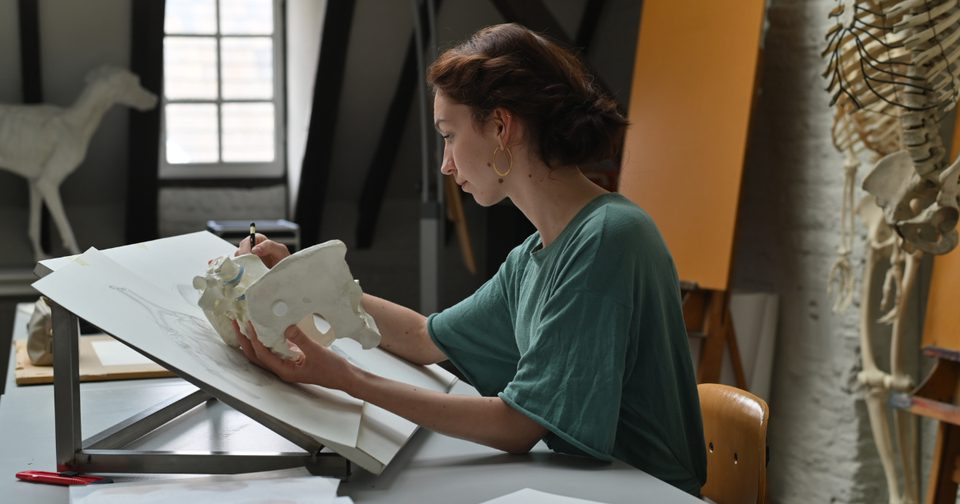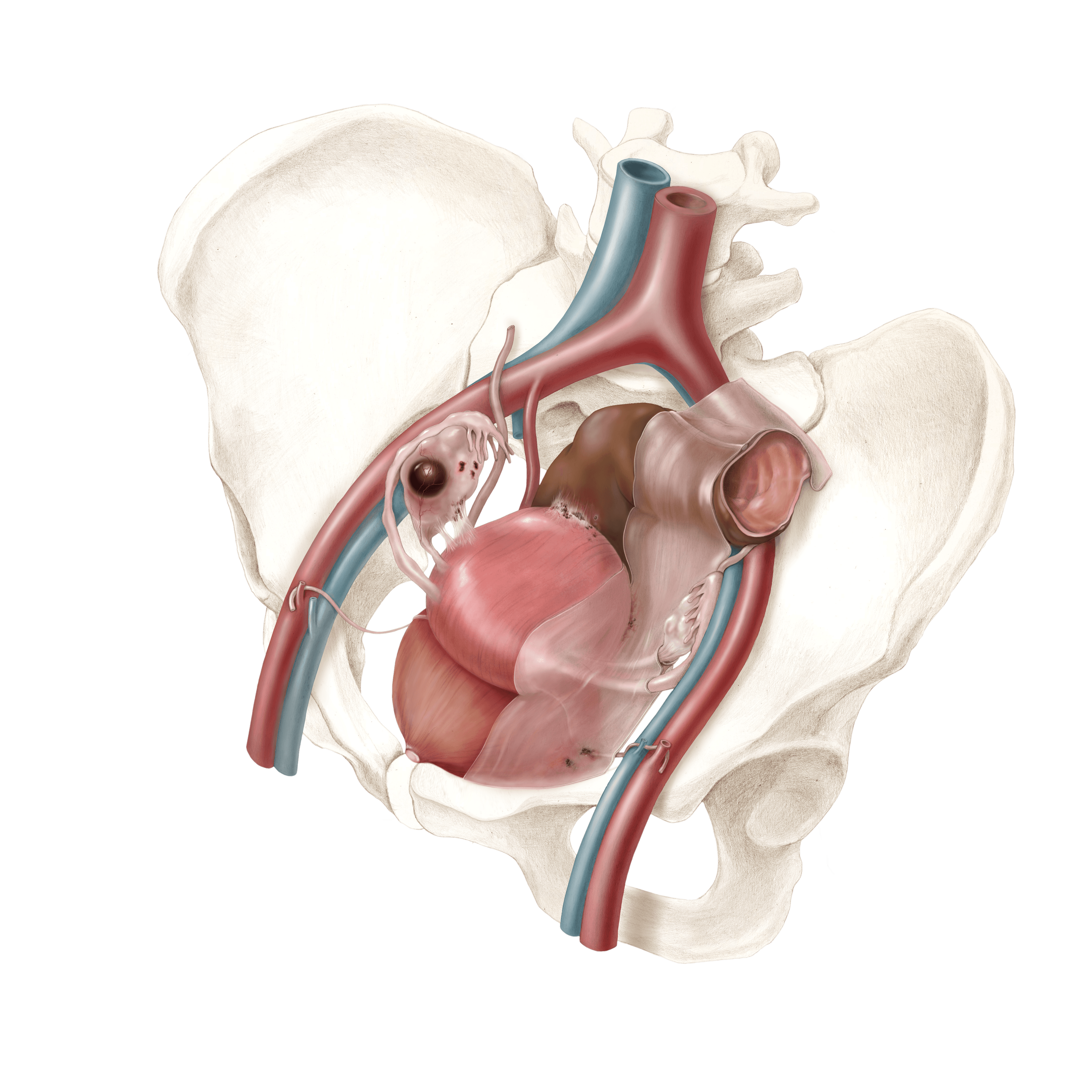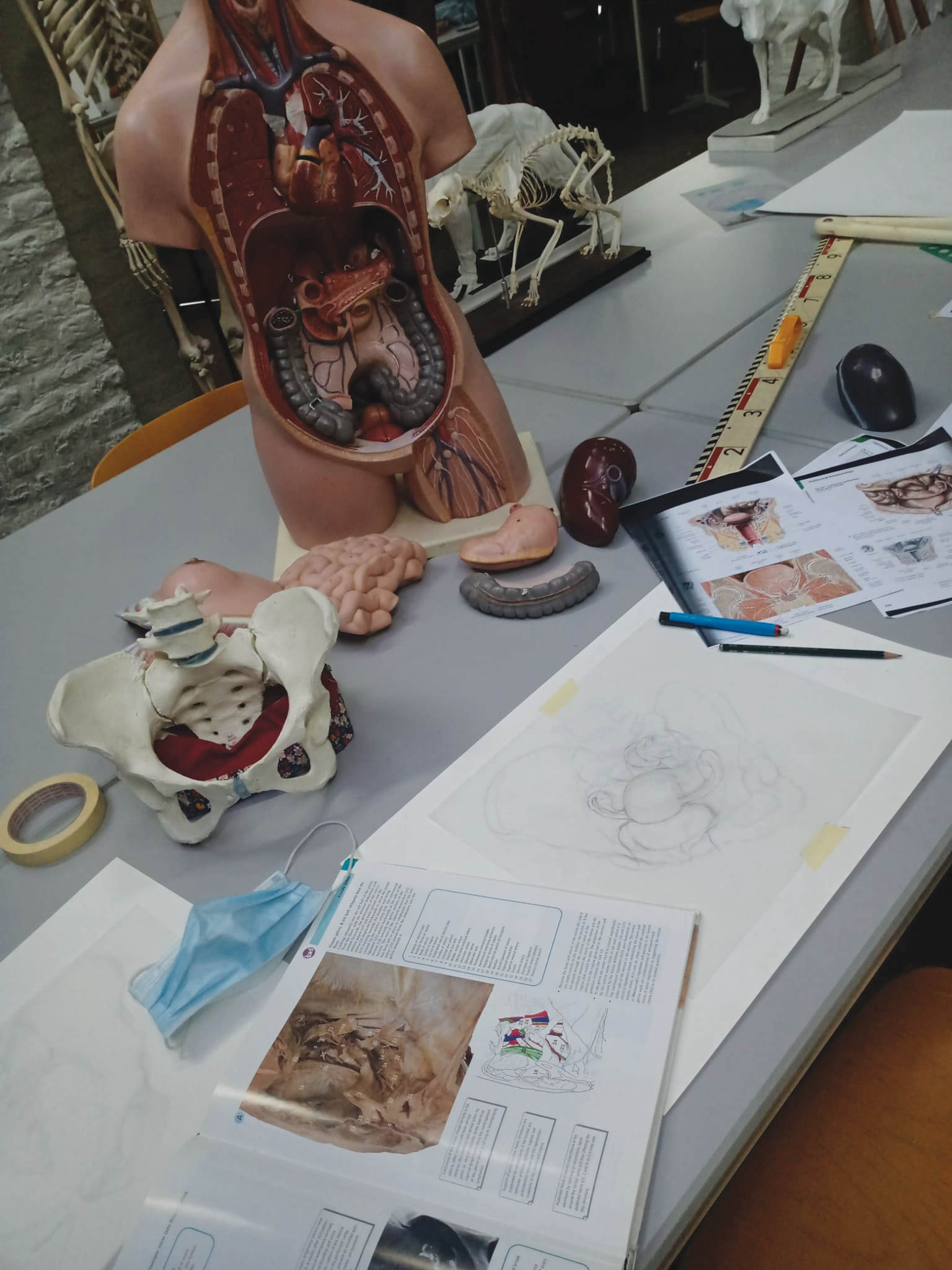“Not Ovary-Acting": International MWRI Collaboration Highlights Underrepresentation of Female Anatomy in Medical Illustrations

By: Gina Edwards
Dr. Nicole Donnellan, MWRI Investigator and UPMC Magee Gynecologic Surgeon Informs Master Thesis in Scientific Illustration for Dutch Student Roberta Müller
Holding a model of the pelvis in one hand and her sketching pencil in the other, seated at a drafting table surrounded by skeletons in Maastricht, Netherlands, is Roberta Müller. Now a master-level graduate of scientific illustration, Roberta directed her thesis project toward a topic that motivated her due to its unequal representation in the medical field: women’s health. .
 | “Women’s rights and gender equality is a subject that has fascinated me throughout the years, and I decided that women’s health would be a good subject to start orienting myself in,” Roberta says. |
After taking dissection classes to observe the shape of the uterus and talking with medical students about their learnings, Roberta noticed some concerning gaps when it came to female anatomy in medical illustrations. Especially for complex and difficult-to-diagnose diseases like endometriosis, more comprehensive and accurate depictions of the disease presentation for medical students are critical.
To inform her thesis, titled “Not Ovary-Acting: A Visual Exploration Highlighting the Underrepresentation of Female Anatomy in Medical Illustrations, using Endometriosis as a Case Study,” Roberta contacted Nicole Donnellan, MD, founder and director of the UPMC Magee-Womens Center for Endometriosis and Chronic Pelvic Pain, gynecologic surgeon at UPMC Magee-Womens Hospital, and researcher at Magee-Womens Research Institute.
Dr. Donnellan served as the medical consultant on the project and offered her input while Roberta developed and defended her thesis. As Roberta developed illustrations for a range of target audiences, Dr. Donnellan also connected Roberta with fellow experts in physical therapy or urogynecology for support.
 | “It was very interesting to work with somebody so passionate about a topic like women’s health and endometriosis from an artistic standpoint,” Dr. Donnellan says. “I think it just shows that advocacy has to be in many different places for things to change.” |
To Roberta, projects like her thesis, and indeed her career itself, are an opportunity to bring about greater awareness and understanding of the workings of the human body while creating a more equitable landscape for medical illustration in the future.
“The task of a scientific illustrator is to communicate the science as clearly as possible,” Roberta says. “I sincerely hope that medical illustrators take on the responsibility of increasing representation and diversity in our work.”
Read the full Winter 2024 MAGEE Magazine issue here.